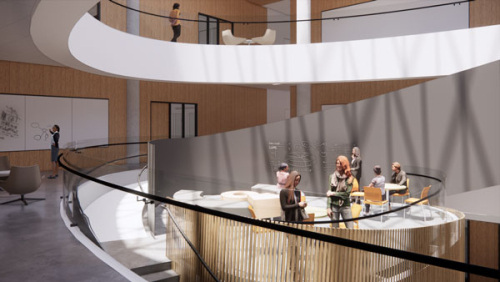
McGill’s new complex will be built for connection and exchange between academics, students, and staff. The New Vic will serve the university community while inviting partners, community groups, and citizens to share in the physical and intellectual vibrancy of the site. Special attention will be paid to the balance between functionality, nature, heritage and recognition of the Indigenous history of the land.
Classic patient wards and medical facilities will be reimagined and completely reinvented into a dynamic space – creating opportunities for creative collisions and greater innovation.
Discovery hubs
Intensive research laboratories where academics and students from different fields, but working on similar problems, can share equipment, resources, knowledge, and results.

Teaching and learning spaces
Classrooms, lecture halls, study spaces, and a library branch, designed for active learning, well-being, creativity and exchange.

Shared and public spaces
Walkways, cafés, restaurants, and public lecture and event spaces that will open the university to the community.
Green spaces
The site will become a new public gateway to Mount Royal and extend the Promenade Fleuve-Montagne that connects downtown to the mountain thanks to the reintegration of green spaces and natural features.
The New Vic will serve as a model for how heritage buildings can be responsibly re-purposed, with new buildings that will feature the most advanced standards of sustainable design and construction.
At the end of this major project, McGill University aims to obtain LEED and WELL certifications. Not only will the project provide world-class spaces for education and research, it will be a space that is rooted in its community, its history, its city, and its territory.
The New Vic Project at McGill will use only 15 per cent of the former Royal Victoria Hospital site, which the Société québécoise des infrastructures is responsible for revitalizing.